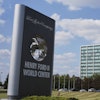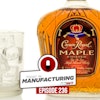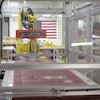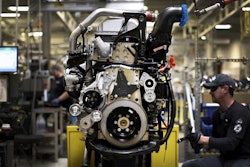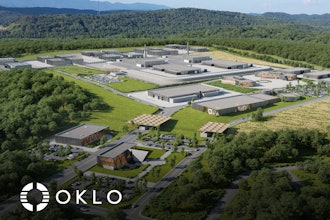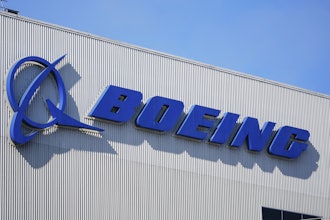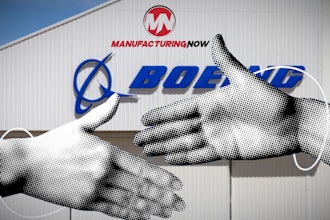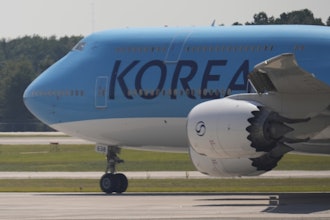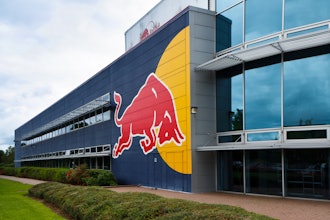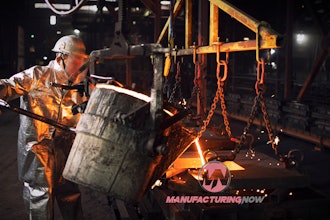TMF O R A 3 D W O R L D
White Paper
3D printing has moved beyond prototyping. The current state of 3D printing systems, materials and parts-on-
demand providers makes 3D printing jigs and fixtures and other manufacturing applications practical and accessible
to manufacturers.
Mainstream manufacturers are wise to seize on the economic and efficiency advantages offered by this technology, as
well as the new possibilities it opens.
PRODUCTION TOOLS WITHOUT TOOLING DELIVER REAL VALUE
TO MANUFACTURERS WITH 3D PRINTING
JIGS AND FIXTURES:
MORE PROFITABLE PRODUCTION
2NEW POSSIBILITIES
New possibilities are born of new capabilities. The ability to
dramatically lower production times and costs on complex,
low-volume components, often while increasing functionality, is a
game changer.
What’s at stake for manufacturers are the prospects to improve
current operational efficiencies and reduce costs, as well as
capitalize on new product and market opportunities. Ultimately,
3D printing may enable strategic initiatives that change
manufacturing and business models, and provide disruptive
competitive advantages.
Underlying the operational value of 3D printing are new ways to
mitigate risks inherent in traditional manufacturing:
• Product and production risk due to imperfectly designed parts
• Missed opportunities to supply new products to customers due
to delays using traditional processes
• Missed opportunities to innovate parts and products using
new design and manufacturing capabilities.
Organizations realize that short-term opportunities are real,
but the implications of not developing proficiency with this new
capability could be even more significant.
JIGS AND FIXTURES: A VALUABLE
STARTING POINT
As 3D printing grows beyond just prototyping, manufacturers are
finding a valuable asset in the production of jigs and fixtures. 3D
printing jigs and fixtures typically yields lead-time reductions of 40
to 90 percent and cost savings of 70 to 90 percent.
The fundamental objectives of manufacturing — quality
improvement, decreased cycle time and reduced costs — are the
primary reasons that jigs and fixtures are so ubiquitous. It doesn’t
matter if an operation is fully automated or entirely manual: jigs
and fixtures are deployed throughout manufacturing operations.
Going beyond jigs and fixtures, manufacturing tools that serve as
operational aids further broaden the opportunities. They range
from organizational bins and tool holders for 5S (a workplace
organizational methodology) to templates, guides and gauges.
They include sophisticated robotic end-effectors (grippers) and
rudimentary trays,
bins and sorters
for conveyance
and transportation.
No matter the
name, description
or application,
manufacturing aids
increase profit and
efficiency while
maintaining quality.
Even though
manufacturing tools like jigs and fixtures are widespread, many
manufacturing facilities don’t use these tools to their fullest:
Making them takes time, labor and money. However, 3D printing
stretches limited resources. It provides a simple, automated,
fast and inexpensive methodto fabricate customized parts
and products.
SMASHING BARRIERS
Substituting 3D printing for traditional methods of making jigs
and fixtures can reduce their cost and accelerate delivery. In
these terms alone, 3D printing systems are justified with short
payback periods.
When machined fixtures were quoted at $12,000 and seven days, Thermal
Dynamics opted to make them with FDM to save $10,000 and several days.
Method Cost
Estimate
Time
Estimate
Conventional
machining and
fabricating
(6 fixtures)
$12,000 7 Days
Direct digital
manufacturing
with FDM
(6 fixtures)
$2,040 4 Days
SAVINGS $9,960
(83%)
3 Days
(42%)
How Did FDM Compare to Traditional
Methods for Thermal Dynamics?
3But this ignores the
larger impact on
the bottom line: 3D
printing lowers the
threshold for justifying
a new tool. It does
this by simplifying the
process, lowering the
cost and decreasing
lead time. This allows
you to potentially address unmet needs throughout the production
process.
With 3D printing you have the power to:
• improve process throughput;
• lower inventories by producing on demand instead of inventorying;
• re-apply skilled workers more productively; and
• reduce scrap and rework.
PRACTICAL EXAMPLES
Thogus Products is an injection molder that specializes in
low-volume manufacturing and highly engineered materials.
According to Natalie Williams, quality manager at Thogus, “It is
so much easier for me to model a fixture and print it myself than it
is to design it and work through an outside machine shop.”
For Thogus, 3D printing is easy and fast. “For one 12-cavity CMM
fixture the lead time, if outsourced, was seven to 10 days. I built
it overnight [with 3D printing],” Williams says. Manufacturers
using FDM®-based 3D printers and 3D production systems to
create custom manufacturing tools often experience lead-time
reduction of 40 to 90 percent. In many cases, jigs and fixtures are
manufactured with only 15 minutes of hands-on labor.
3D printing increases return on investment by reducing the cost
of a jig or fixture. Typically, companies realize savings of 70 to 90
percent when compared to outsourced fixtures that are machined
or fabricated. Thogus saved 87 percent on its 12-cavity fixture.
“The machine shop wanted $1,500 for the fixture. I made it for
less than $200 in materials,” says Williams.
BETTER DESIGNS, BETTER PERFORMANCE
3D printing also optimizes tool performance. Previously, designs
for jigs and fixtures rarely improved past what was sufficient to
do the job. Due to the expense and effort to redesign and re-
manufacture them, only malfunctioning tools received revisions.
This “good enough” thought process may have added a few
seconds to an operation or increased the scrap rate by a small
percentage, but the savings might not have warranted further
investment in the tool.
3D printing changes that thinking. The cost is so low, it can deliver
the next-generation manufacturing tool in time to have it in service
the next day. A simple tool like this requires only a little time and
initiative to redesign.
While a redesign
may only drive out a
few seconds from an
assembly operation,
that time adds up. If
the fixture is used to
make 500 items per
day per worker, a
two-second savings
reduces direct labor
by 70 hours per
BMW’s jigs and fixtures department used a
Fortus® 3D Production System to manufacture
assembly tools. This tool is used to affix the rear
name badge.
Thogus Products applied FDM-based 3D printing to reflow its fixturing, jigs and
end-of-arm tooling for part extraction and placement, reducing direct labor
and expenses.
Part/Tool FDM Alternative
method
End-of-arm
robot
$618
24 hours
$10,000
4 weeks
Steel plates $21/
2 hours
$200
2 weeks
How Does FDM Compare to
Alternative Methods at Thogus?
4person per year. For
the same part, a one-
percent reduction
in scrap would save
1,250 parts per year.
The bottom line: more
jigs and fixtures with
optimized designs
in service mean
more money to your
company’s bottom
line.
PRINT ON DEMAND
Stop thinking of your jigs, fixtures and other manufacturing tools
as assets. Instead, think of them as expenses, and disposable.
As assets, jigs and fixtures are stored (inventoried) between
uses. They remain in inventory until the product line is retired
or they are worn beyond repair. With the time, cost and effort of
making manufacturing tools through conventional methods, they
are too valuable to be discarded.
This approach carries many indirect costs, however. There is cost
for the shelf space (warehousing expense), cost to manage and
track the inventory, and cost to locate a jig or fixture when needed.
For sporadically used tools, these costs can be quite significant.
The opposite can be true with 3D printing. Often, it takes more
resources to inventory jigs and fixtures than it does to remake
them. So, companies adopt a management approach called digital
warehousing where only the digital file is carried in inventory. It
may seem unthinkable to scrap a perfectly good manufacturing
tool, but for those with infrequent use, this approach reduces cost
and labor.
Now companies make a fixture when it’s needed, and then
digitally warehouse its design for future uses. This print-on-
demand approach is also handy when a replacement is needed
for a broken manufacturing tool or duplicates are needed for
increased production to meet an unexpected surge in sales.
Additionally, parts-on-demand providers deliver a simple, low-
cost, service-assisted method of starting for new adopters of
3D printing. These providers bring expertise, flexibility and
finishing services that accelerate results. Organizations with
internal systems that experience capacity constraints, or projects
that require special materials, benefit from 3D printed parts on
demand as well.
CONCLUSION
3D printing can lead to big changes that maximize profits by driving
out every wasted second and penny from the manufacturing
process. Rather than replacing traditional manufacturing methods,
it should be viewed as a complementary technology that adds
value and opens new possibilities. Savings on the manufacturing
floor and in jig and fixture production will be substantial.
If you have a 3D CAD file and access to a 3D printing system,
you are ready to start fabricating manufacturing tools with as little
as 15 minutes of hands-on labor. Combine the simplicity with
Method Tool
Production
Cost Tool
Production
Time
Traditional
CMC
1 days $250 30 days
FDM Tooling 3.5 Hours $55 1 day
SAVINGS 3.5 days $195 (78%) 29 days (97%)
How Did FDM Compare with Traditional Methods for Oreck?
Oreck uses this jig during assembly of its vacuum cleaners. Here a vacuum top
cover is placed into the pallet upside down.
Method Cost Lead
Time
Traditional CNC
Machining
(Aluminum)
$420 18 days
Fortus System
(ABS-M30™
Thermoplastic)
$176 1.5 days
SAVINGS $244
(58%)
16.5 days
(92%)
How did FDM compare to traditional
CNC machining for BMW?
©2014 Stratasys Ltd. All rights reserved. Stratasys, Stratasys logo, FDM, Fortus, PolyJet, are trademarks or registered trademarks of Stratasys Ltd. and/or
its subsidiaries or affiliates and may be registered in certain jurisdictions. Fused Deposition Modeling, FDM Technology are trademarks of Stratasys Inc.
Product specifications subject to change without notice. Printed in 2014 and in the USA. SSYS-WP-Jigs-Fixtures-10-14
For more information about Stratasys systems, materials and applications, call 888.480.3548 or visit www.stratasys.com
7665 Commerce Way
Eden Prairie, MN 55344
+1 888 480 3548 (US Toll Free)
+1 952 937 3000 (Intl)
+1 952 937 0070 (Fax)
2 Holtzman St.
Science Park, PO Box 2496
Rehovot 76124, Israel
+972 74 745-4000
+972 74 745-5000 (Fax)
ISO 9001:2008 Certified
Stratasys | www.stratasys.com | [email protected]
typical time and cost reductions of 40 to 90 percent, and you will
understand why 3D printing spurs companies to make more jigs,
fixtures and other manufacturing tools than ever before.
Perhaps most importantly, starting now with jigs and fixtures and
other tools puts you and your manufacturing team on the path
to rethinking your production process and even business model.
Method (to
make 350 parts)
Cost Lead
Time
Building by hand $7,200 120
hours
Punching with
steel rule dies
$11,450 200
hours
Punching with
FDM tooling
$268 5.5 hours
SAVINGS $11,182
(98%)
194.5 hrs
(97%)
How did FDM compare with traditional
tooling methods for Xerox?
An operator at Xerox modified 350 connectors in about an hour on this toggle press.
Jigs and Fixtures: More Profitable Production
New possibilities are born of new capabilities. The ability to dramatically lower production times and costs on complex, low-volume components, often while increasing functionality, is a game changer. What’s at stake for manufacturers are the prospects to improve current operational efficiencies and reduce costs, as well as capitalize on new product and market opportunities.
Latest in Home
